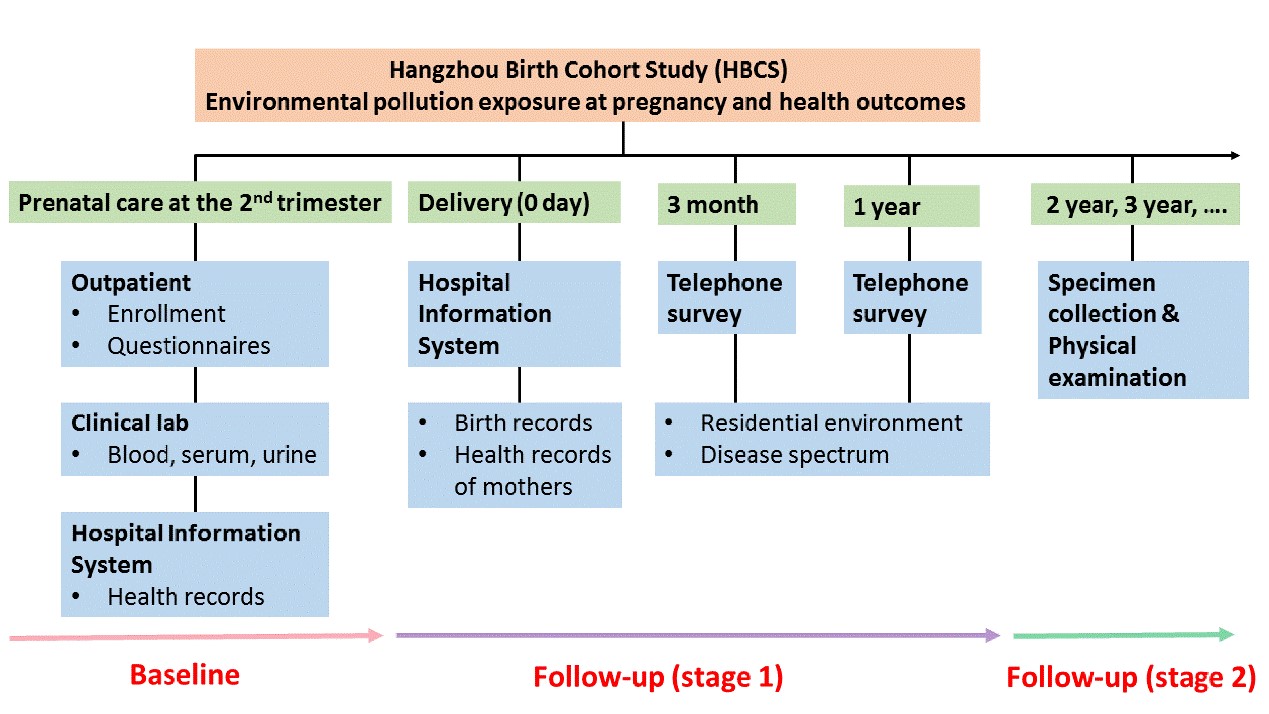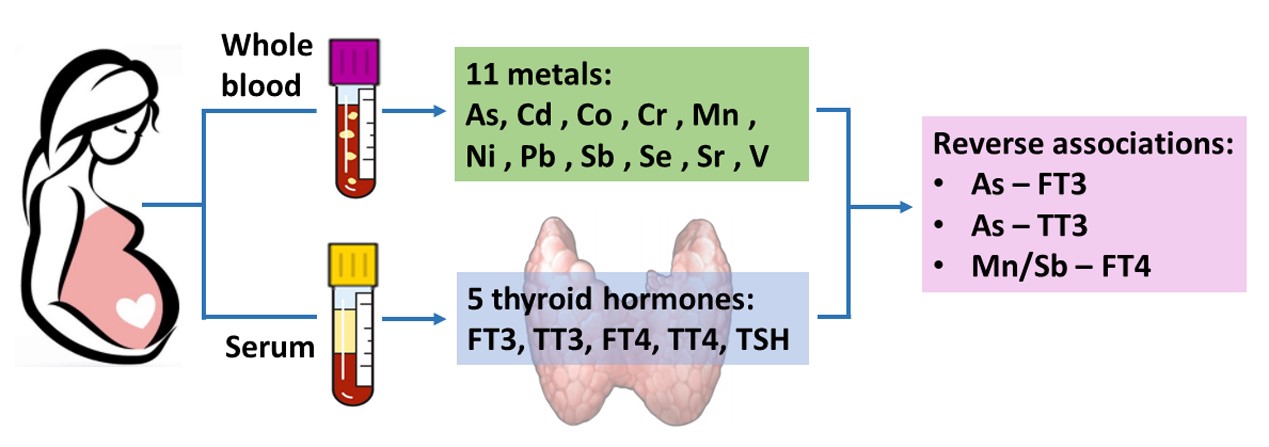Heavy metal pollution becomes a serious problem of public concerns with the rapid population explosion, industrialization and urbanization in China. Proper thyroid function plays critical roles in fetal growth and maintaining pregnancy. Thyroid hormone deficiency is linked to adverse obstetric outcomes such as spontaneous abortion, pre-eclampsia, placental abruption, and adverse neonatal outcomes including premature delivery, low birth weight and neonatal respiratory distress. However, few epidemiological studies have investigated associations of exposure to multiple metals with thyroid hormone homeostasis, especially for the pregnant women.
The researchers from Prof. Chen’s group addressed this issue by using data from the baseline survey of Hangzhou Birth Cohort Study (HBCS), which is an ongoing prospective study of environmental exposures and health among pregnant women and children in Hangzhou City, China (Figure 1). In this report, a total of 915 pregnant women with complete data of interest were analyzed. Relationships between tertiles of 11 metal levels (setting the lowest tertile as the reference) and percent changes in five thyroid hormones were estimated by multivariable adjusted linear regression models.
The results indicated that percent changes [95% confidence intervals (CIs)] in thyroid hormones for the third tertiles of metals were statistically significant between free triiodothyronine (FT3) and arsenic (As) [-3.53% (-5.48%, -1.54%)]; and between total triiodothyronine (TT3) and As [-4.19% (-7.00%, -1.31%)]; and between free thyroxine (FT4) and manganese (Mn) [-2.05% (-3.49%, -0.58%)], antimony (Sb) [-1.99% (-3.44%, -0.52%)] in the adjusted models (Figure 2).
“As far as we know, this is the first study to systematically estimate a panel of metals simultaneously in relation to the thyroid hormones among pregnant women” Said by Ph.D. candidate GUO Jing, the first author of this article.
“Because of the ubiquitous exposure to metals and the critical roles of thyroid hormones during pregnancy, the potential public health applications of the findings are substantial. We look forward to explore the health effects of many other environmental pollutants, such as Persistent Organic Pollutants, among Chinese pregnant women and children in the future” said by Prof. Chen.

Figure 1. Study design of Hangzhou Birth Cohort Study (HBCS)

Figure 2. Associations between maternal blood metals and thyroid hormones


